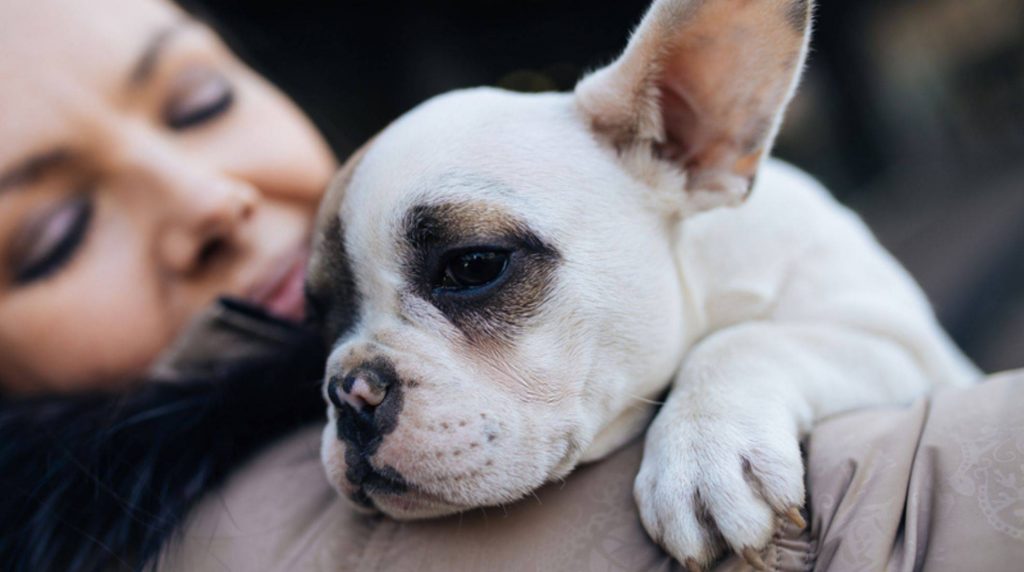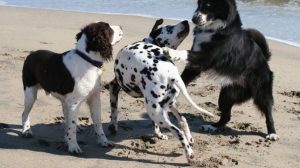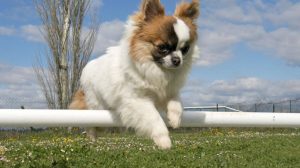The bond between humans and dogs ensures a trusting social relationship, i.e., the friendship between animal and owner. It is not easy to recognize in all dogs because not all four-legged friends are human-related in their breed-typical dispositions.

Through evolutionary adaptation, breeding, and socialization, a kind of partnership between humans and dogs has developed. A good bond with the human partner is an advantage for the four-legged friends, and we humans also benefit from it when we get involved in animal friendship – a clear example of this is therapy dogs. But how can you tell that your dog trusts you and feels safe with you?
Human-Dog Bond: What is it?
The attachment theory is a psychological thesis that was developed by the British child psychiatrist John Bowlby, among others, to analyze the early mother-child relationship. He and his colleagues assumed that the nature of the relationship and the mother’s behavior towards her child and vice versa significantly impact the child’s later development. For example, behavioral problems can be traced back to a disturbed mother-child bond. According to Bowlby, children with a secure attachment to their caregiver can appropriately regulate closeness and distance from them. They are happy when their caregiver is present but still behave normally and calmly when leaving the room.
In addition, there are three different types of attachment in which the relationship to the reference person is disturbed:
● Insecure Avoidant Attachment: The children/dogs often play alone and don’t seem to care whether their caregiver is present or not. They avoid contact and appear independent, even if they suffer from internal stress.
● Insecure, ambivalent attachment: The children/dogs show extreme separation anxiety; they are deeply insecure and react anxiously to panic when their caregiver leaves the room. If she is present, the children/dogs either cling to her or behave dismissively or aggressively.
● Disorganized attachment: The children/dogs seem confused and show strange behavior, such as stereotypical movements (turning in circles or chasing their tail) or freezing.
Mixed types from the disturbed attachment types can also appear. The dog researchers and book authors Heinz Weidt and Dina Berlowitz were the first to transfer the attachment theory to the human-dog relationship. According to them, a secure attachment is an emotional state characterized by safety and security. It is part of a vital system.
Bonding with people is expressed in different ways.
A secure bond seems to be easy to spot in some breeds of dogs that were bred to work with or keep people company. They show a clear orientation towards their caregiver, always reassure themselves about their presence and consent before doing anything, and like to come and cuddle on the sofa. When the person comes home from work, they are pleased but also do not suffer from separation anxiety in their absence. Herding dogs like the Australian Shepherd, companion dogs like the Maltese, or some hunting dogs like the Labrador or Golden Retriever typically show their affection for their favorite person so openly.
However, dog breeds were also bred for autonomy and independence from humans. These include livestock guard dogs like the Caucasian Ovcharka, some hunting dogs like the Dachshund or Fox Terrier, and guard dogs like the Doberman Pinscher or Rottweiler. They, too, can develop a secure bond with their owner; they don’t necessarily show it as clearly and exuberantly as those dog breeds whose main job is to keep their human company or who have a strong “will to please” (will to please). Is grown. Their signs that they trust and feel safe with their caregiver are far more subtle. Sometimes they seem stubborn and headstrong, but they also develop a secure bond with their humans if they are kept in a species-appropriate manner. It can be recognized, for example, by the fact that the dog behaves in a relaxed way when it is close to its owner. In conflicts and stressful situations, even a less clingy four-legged friend will orientate himself towards his human partner if the trust is correct.
Important: Every dog is always an individual with its character, so a representative of a dog breed bred for a willingness to cooperate and relate to people may be somewhat reserved and distinctive, and a four-legged friend produced for independence likes to cuddle on the sofa.
Create a secure bond with the dog
So don’t worry if your dog isn’t cuddly and seems to have his mind. The main thing is that you are a loyal, reliable partner for your four-legged friend who offers him safety and security. Such a secure bond can be achieved through clear rules, consistency in upbringing, communication, behavior, and appropriate training with the proper reward.









